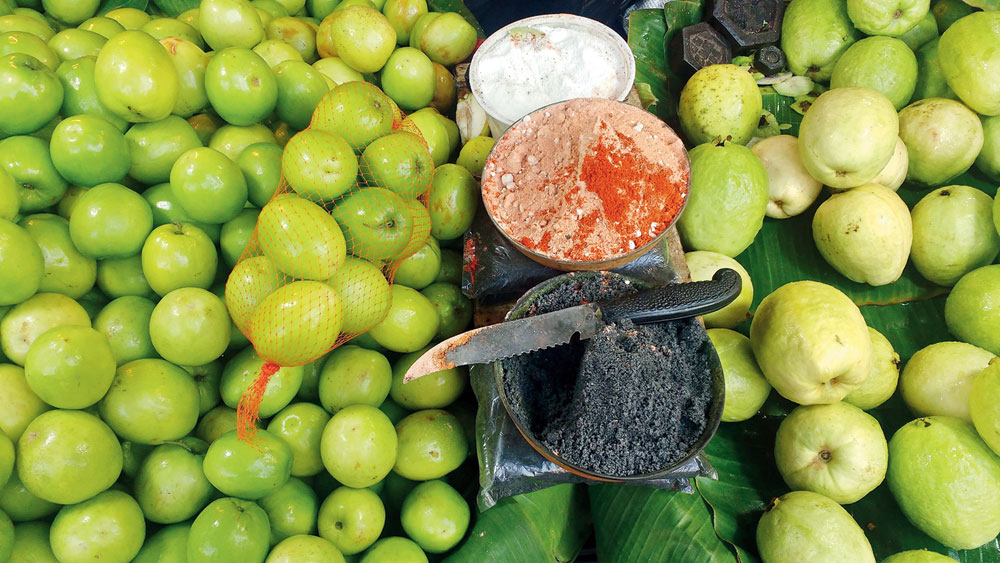Right next to the heap of bright red apples at the roadside fruit stall in north Calcutta is a green heap — equally shiny if not shinier. Up close you realise what you mistook for green apples are actually bers, kul in Bengali. There is no English equivalent really, though berry comes close.
Kul appears around this time of the year and is indelibly linked with Basant Panchami or Saraswati Puja. In fact, there is a ground rule about the kul that almost every earnest student in eastern India follows, or used to. It is this: no youngster should partake of the fruit before Saraswati Puja. Defy and the wrath of the goddess will decimate your grades. Now, that is a superstition even the most radical of the lot will hesitate to break.
Durbamanjaree Niyogi, who lives in Copenhagen now but she went to the School of Languages in New Delhi’s Jawaharlal Nehru University in the late 1990s, still calls herself a Left-leaning rationalist. She says, “I never could get myself to eat a kul before Saraswati Puja, although the campus had some lovely topa kul trees.” In retrospect though, the superstition was possibly created to keep children from eating the unripe variety that could cause sore throat and accompanying ills, all of it impacting the all-important grades, of course.
So much for the theology and the myth mills. Back to the biology of it. There are basically three types of kul — the wild, sour, brown-skinned topa makes the tastiest pickles; the sweet-sour, crunchy desi tastes best when it is yellow-skinned; and the insipid narkeli, which is part of the fruit and sweet offering to the goddess of learning. But the neo neon green kul is nothing like anything you would recognise; for one it is humongous. So huge that anyone who has ever regretted a ber being barely a mouthful will not have reason to complain again.
Kul is not peculiar to India. It is found across Asia from Palestine to China. The Ziziphus jujube or Chinese jujube — the one we call desi kul — originated in China. The Ziziphus mauritiana or narkeli kul is native to the Indian subcontinent, while the topa originated in West Asia.
According to a paper in the Journal of Ethnobiology and Ethnomedicine, Jesus was crowned with the thorns of the Ziziphus spina-christi or our very own topa kul.
While the kul can be eaten as a table fruit, it is tastier as a chaat or kul makha, which is the Bengali version. The turgid topa is burst, seasoned with salt and sugar, and flavoured with mustard oil, cilantro and chopped green chillies. The crunchy desi kul is smashed and mixed with rock salt, chilli powder, cilantro and perhaps a splash of mustard oil. Mouthwateringly delicious. The narkeli, name notwithstanding, tastes nothing like a coconut, ripe or raw. At best you could say its form resembles a diminutive coconut. As for the green-apple-sized ones, they are locally known as bao kul. About three times the size of the common narkeli, they started appearing in the market about five years ago. And now, they have virtually taken over the market.
The bao, a variant of the Ziziphus mauritiana, is thought to have originated in Thailand. It, however, entered India via Bangladesh, according to Rishi Krishna De, project director of Malda’s Agriculture Technology Management Agency. Says De, “Cultivation started from Basirhat [North 24-Parganas]. There was a nursery called Shahnoor Nursery.” The owner ran nurseries on both sides of the Indo-Bangladesh border. “He was the first to offer bao kul at Rs 250 a plant. When people figured they were very high-yield crops, their cultivation took off,” De explains. It seems you can earn a profit of Rs 30,000 per harvest if you grow the bao kul in a bigha [one-third of an acre] of land. To put that in context, growing paddy in a bigha of land would fetch you a profit of Rs 3,000 per harvest.
The ever enterprising Indian soon learnt that the bao kul propagated well through cuttings. The other advantage being, in three years a plant starts producing bushels of fruit and does not require too much caretaking either. In fact, the ziziphus or Indian jujube is a tough plant that can survive both waterlogging and drought. It is therefore no wonder that bao kul is now grown all across the state of West Bengal, from Malda in the north to Baruipur in the south.
Another factor that added to its lure is that the bush can be pruned severely with no disadvantage to the next harvest, allowing intercropping or growing of seasonal crops between the kul rows. The desi kul does not take kindly to its branches being lopped off. The spreading branches block sunlight, making it impossible to grow anything under them. But the bao can be kept a bush with annual pruning.
For the urban Indian, however, the kul point, irrespective of type, is this — it is the first taste of spring. The signal of a largely mouth-puckering change of season.













